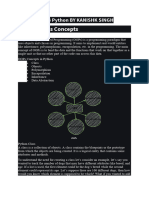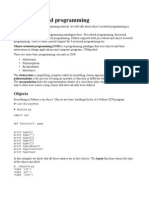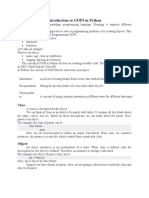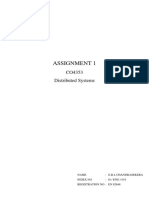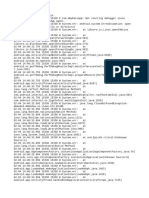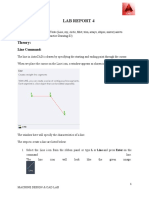0% found this document useful (0 votes)
72 views33 pagesClass 3 To Class 5 Python OOPs Concepts
The document discusses Python object-oriented programming (OOP) concepts including classes, objects, inheritance, polymorphism, and encapsulation. It provides examples of creating Python classes with attributes, methods, and inheritance. Specifically, it shows a Person parent class that is inherited by an Employee child class, overriding the details method. The document also demonstrates polymorphism through Bird, Sparrow, and Ostrich classes that override the flight method differently for each.
Uploaded by
Ramesh LCopyright
© © All Rights Reserved
We take content rights seriously. If you suspect this is your content, claim it here.
Available Formats
Download as PPTX, PDF, TXT or read online on Scribd
0% found this document useful (0 votes)
72 views33 pagesClass 3 To Class 5 Python OOPs Concepts
The document discusses Python object-oriented programming (OOP) concepts including classes, objects, inheritance, polymorphism, and encapsulation. It provides examples of creating Python classes with attributes, methods, and inheritance. Specifically, it shows a Person parent class that is inherited by an Employee child class, overriding the details method. The document also demonstrates polymorphism through Bird, Sparrow, and Ostrich classes that override the flight method differently for each.
Uploaded by
Ramesh LCopyright
© © All Rights Reserved
We take content rights seriously. If you suspect this is your content, claim it here.
Available Formats
Download as PPTX, PDF, TXT or read online on Scribd
/ 33
